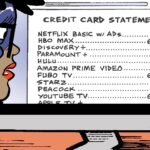 Google is sticking with the script of “openness” in its publisher roadmap, citing a flurry of product updates designed to maximize publisher revenue, access to inventory and the user experience on mobile.
Google is sticking with the script of “openness” in its publisher roadmap, citing a flurry of product updates designed to maximize publisher revenue, access to inventory and the user experience on mobile.
There is an uptick in publishers, including USA Today Network, The New York Times and Time Inc., that are structuring direct deals programmatically, Google said.
Between January and September of this year, the number of video ad impressions served through programmatic guaranteed arrangements on DoubleClick has quadrupled, said Peentoo Patel, senior product manager for video at Google. That might be a result of Google’s seemingly more open approach of late.
Although Google originally offered programmatic guaranteed deals through DoubleClick for Publishers via its own demand-side platform (DSP), DoubleClick Bid Manager, it has since expanded access to MediaMath and The Trade Desk.
The move marks a shift for Google, which notoriously stripped third-party DSPs of their access to YouTube inventory in Google’s AdX not long ago.
“What’s been a new thing is this commitment back to the publisher,” Jonathan Bellack, director of product management for Google, said Monday during a meeting with news reporters in New York. “It requires a significant rethinking of the role of a DSP in a deal, [while considering] revenue assurance for publishers.”
Programmatic guaranteed deals allow advertisers to pay a flat price and factor in special considerations by channel.
For instance, advertisers may guarantee placement within a specific ad pod as Google starts to extend programmatic guaranteed deal support to sponsorships – including TV, Patel said.
Bellack noted Google’s evolving relationship with publishers harkens back to other sell-side product pushes.
Google extended exchange bidding access to third-party platforms, for instance, which Bellack claims is paying dividends. Publishers using Dynamic Allocation are seeing as much as a 24% lift in programmatic revenue by fostering more real-time pricing competition, he said.
Another area where Google’s moves are aligning with publisher goals is mobile. Google has more than doubled the number of native ad impressions served monthly via its DoubleClick publisher platforms, with mobile accounting for more than 50% of all ad queries.
In turn, Google is emphasizing mobile web and in-app formats that jibe with publishers’ own content strategies. Increasingly, that includes video, which Google now supports natively through DoubleClick.
DoubleClick’s native video templates are designed as a break from the standard banner, allowing an advertiser to wrap different content elements or links to app installs within a native video ad unit.
Meanwhile, Accelerated Mobile Pages has a direct bearing on overall ad effectiveness, Bellack said.
“The speed of the ad load will be something advertisers and agencies really consider,” he said. “The faster an ad loads, the higher the viewability and conversion rate. Publishers have [achieved] up to 25% greater viewability for mobile websites that load in [less than] 5 seconds.”

Google is also working with several small and large creative agencies, third-party measurement companies and native platforms to address how ads are built and creative assets are served to improve the speed of load time.
Google reemphasized that AMP for ads can run on non-AMP pages barring the ad unit or creative asset meets AMP publisher specifications at the time of their construction.
“No one has to sign a deal with Google to access this code,” Bellack reiterated. We’ve released a first draft of an AMP for Ads spec to GitHub… Our approach is to ensure these are open standards.”














